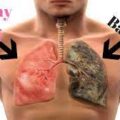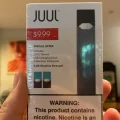The term “vaping epidemic” refers to a significant increase in the use of electronic cigarettes (e-cigarettes) and vaping devices, especially among young individuals, primarily spanning the late 2010s and early 2020s. This trend raised concerns regarding potential health risks and addiction, particularly in relation to the younger population.
One of the central aspects of the vaping epidemic was the rapid surge in the usage of e-cigarettes among teenagers and young adults. These devices garnered popularity due to factors like diverse flavors, perceived novelty, and the misconception that they were less harmful than conventional cigarettes. As a result, the prevalence of youth vaping experienced a substantial uptick.
However, apprehensions about the health implications of vaping soon followed. Despite the initial marketing portraying e-cigarettes as a safer alternative to traditional smoking, emerging evidence indicated potential negative impacts on lung health. Furthermore, instances of severe lung injuries associated with vaping, often referred to as “vaping-associated lung injury” (VALI), heightened concerns.
A crucial aspect of the vaping epidemic was the presence of nicotine in many vaping products. Nicotine, a highly addictive substance, posed a significant risk of addiction among young users who had not previously engaged in traditional smoking. Consequently, efforts to address this issue included both regulations and bans on flavored e-cigarettes, particularly those that attracted younger consumers.
In response to the vaping epidemic, public health campaigns were launched. These campaigns aimed to educate the public, particularly the youth, about the potential risks and misconceptions surrounding vaping. The goal was to raise awareness about nicotine’s addictive nature and the possible long-term health consequences of using e-cigarettes.
Moreover, the vaping epidemic spurred intensified research into the prolonged effects of e-cigarette use. Researchers delved into its impact on lung and cardiovascular health and other systems to comprehensively understand the potential risks tied to vaping.
E-cigarette manufacturers faced scrutiny for allegedly targeting the younger demographic through appealing marketing strategies and enticing flavors. Some companies were subject to legal actions and investigations concerning their marketing practices.
At what age is vaping permitted?
In many places, the age for purchasing and using vaping products is aligned with the legal age for purchasing tobacco products, which is usually 18 or 19 years old. However, there are exceptions and variations in different regions.
For example, in the United States, the legal age for purchasing and using vaping products was raised to 21 as part of the “Tobacco 21” law that was signed into law in December 2019. This law made it illegal to sell any tobacco or vaping products to individuals under the age of 21.
In some other countries, the legal age for vaping might be different. It’s important to check the specific laws and regulations in your own jurisdiction to know the exact legal age for purchasing and using vaping products. These regulations can change over time, so it’s always a good idea to consult official government sources or relevant legal resources for the most up-to-date information.
What is the appropriate punishment for underage vaping?
The appropriate punishment for underage vaping can vary depending on the legal framework and regulations in a specific jurisdiction. It’s important for the punishment to be fair, proportionate, and effective in addressing the issue while also considering the potential impact on the individual’s future behavior and well-being.
Some possible approaches to addressing underage vaping could include:
- Educational Programs: For first-time offenders, educational programs about the risks and consequences of vaping could be a more rehabilitative approach. These programs could help individuals understand the potential health risks associated with vaping and make informed decisions.
- Fines: Issuing fines to underage individuals who are caught vaping could be a deterrent. The fine amount would need to be reasonable and appropriate for the offense.
- Community Service: Requiring underage vapers to perform community service could help them understand the consequences of their actions and contribute positively to their communities.
- Suspension of Privileges: Schools or parents might impose restrictions on certain privileges as a consequence of underage vaping, such as limited access to technology or social events.
- Counseling: For individuals who exhibit signs of nicotine addiction, counseling or support services might be more suitable, focusing on addressing addiction and helping them quit.
- Legal Consequences for Vendors: Punishments for vendors or establishments selling vaping products to underage individuals could include fines, temporary closures, or other legal actions. Strict enforcement against retailers can serve as a deterrent.
- Parental Involvement: In some cases, involving parents or legal guardians can be an effective way to address underage vaping. Parents may take steps to educate their children about the dangers of vaping and work together to find appropriate consequences.
It’s essential for the punishment to be fair, age-appropriate, and considerate of the broader context. The goal should be to discourage underage vaping while also addressing the underlying factors that might lead young individuals to engage in such behavior. The legal system, schools, parents, and communities all play a role in determining appropriate consequences and responses to underage vaping.






